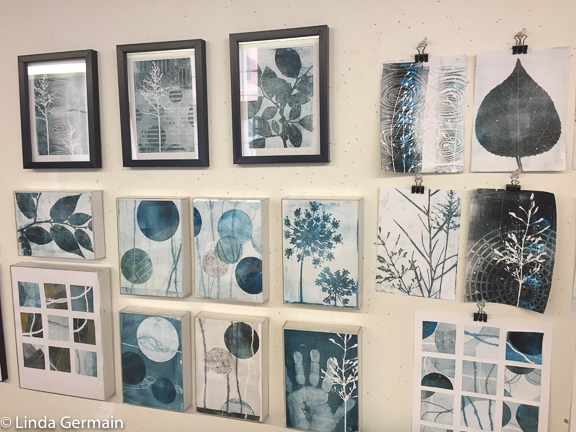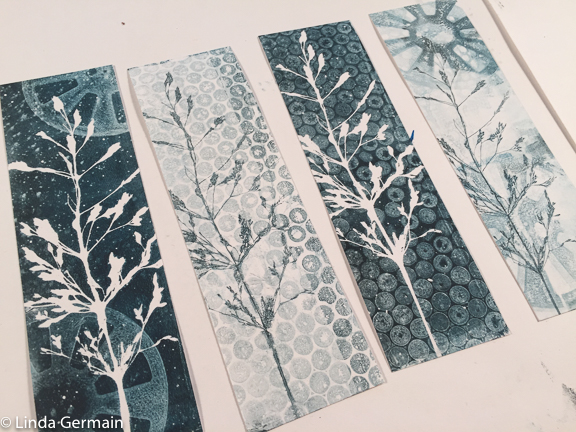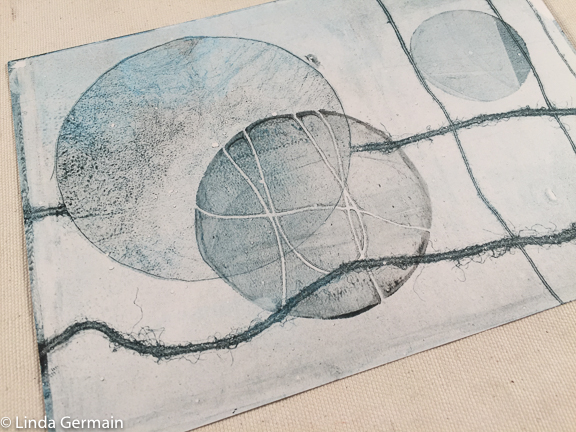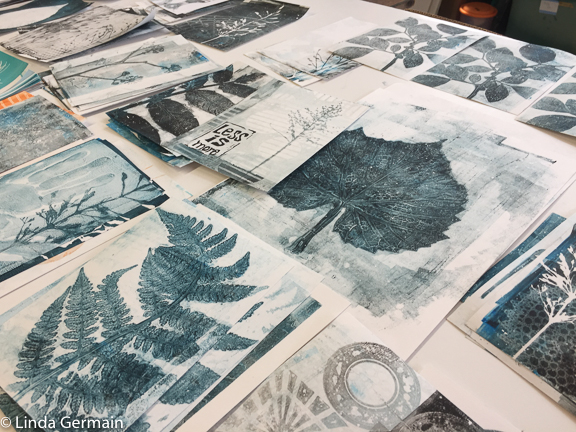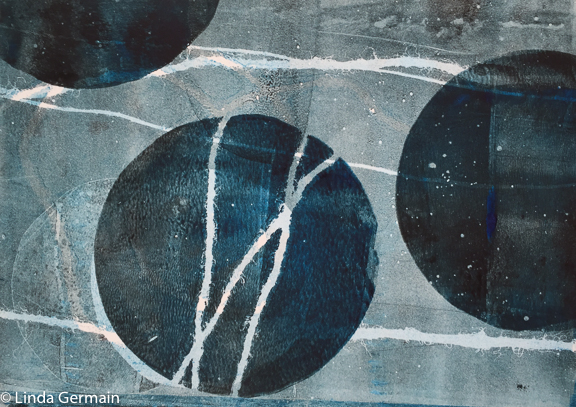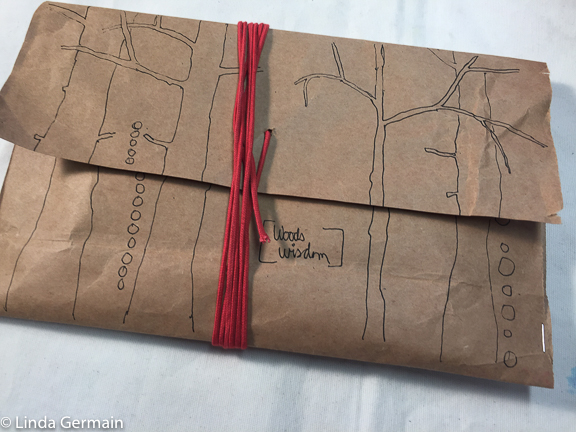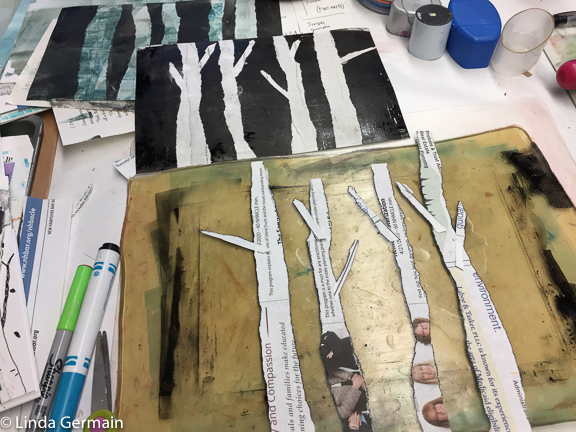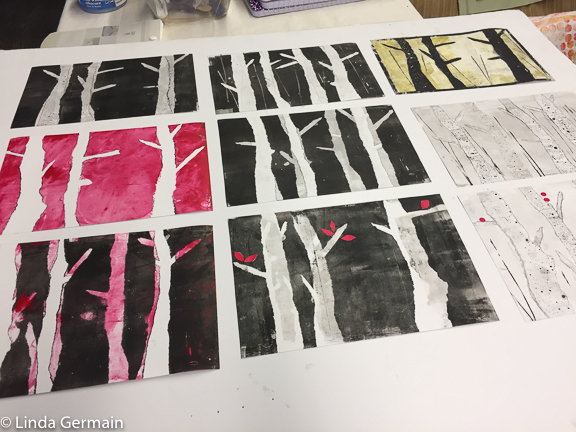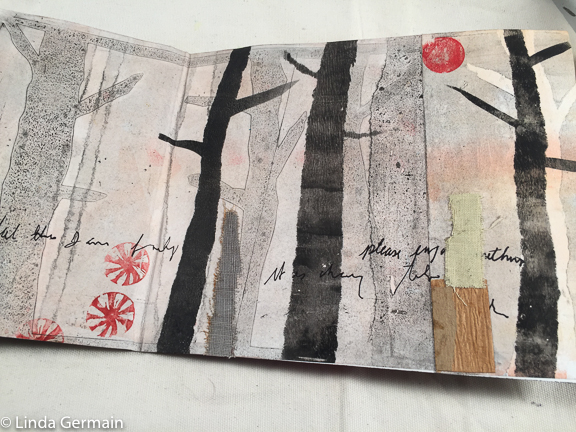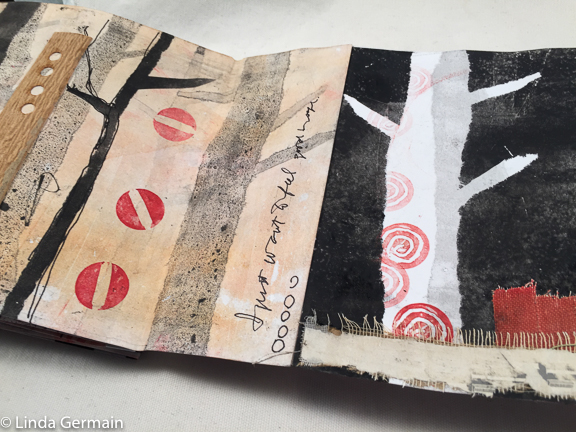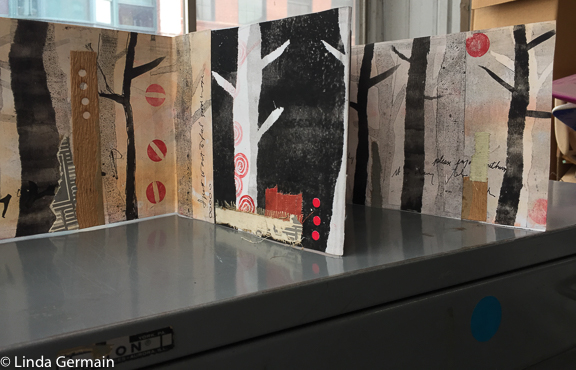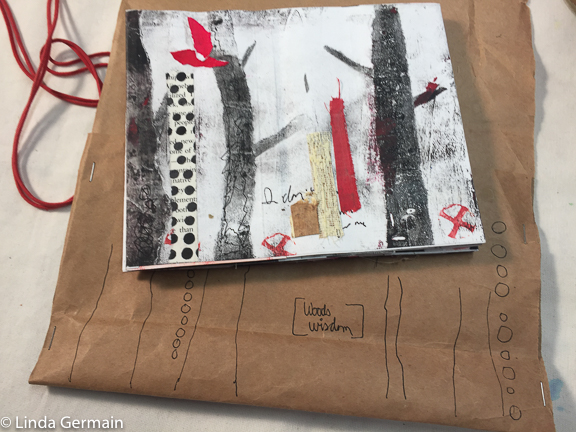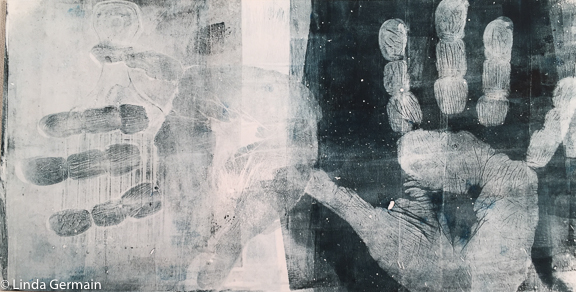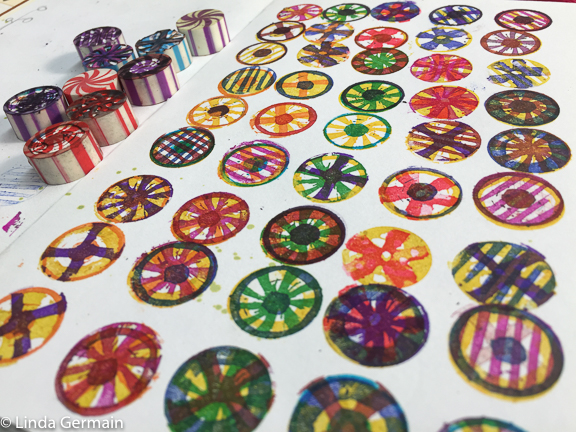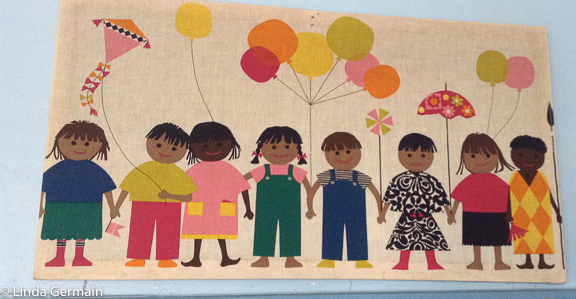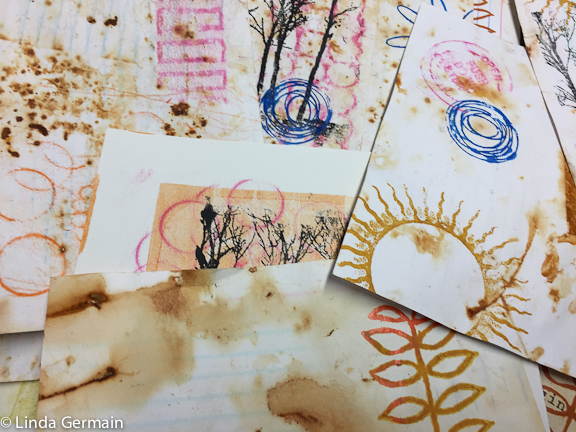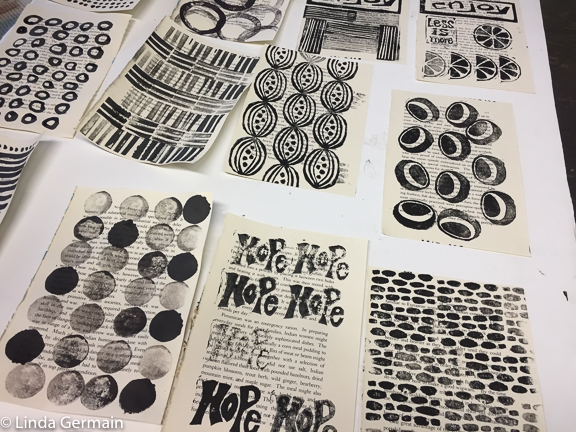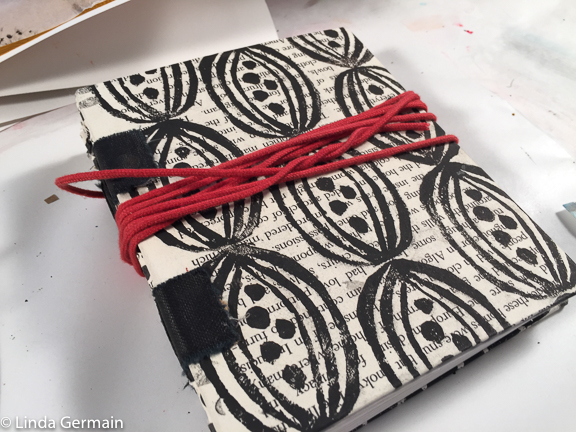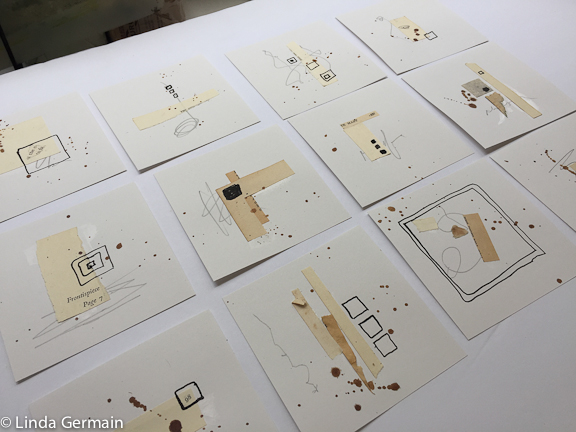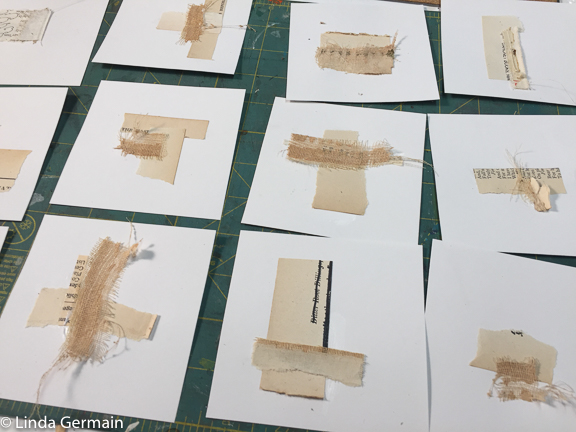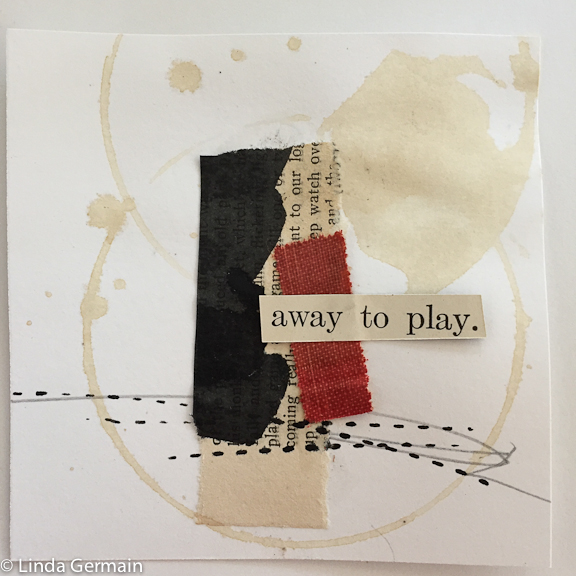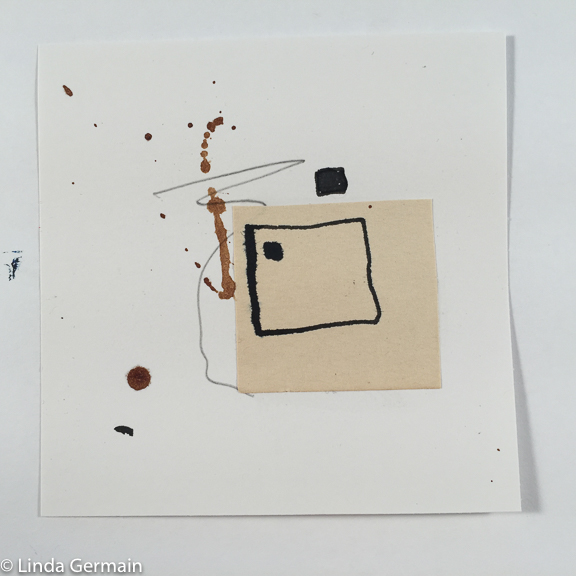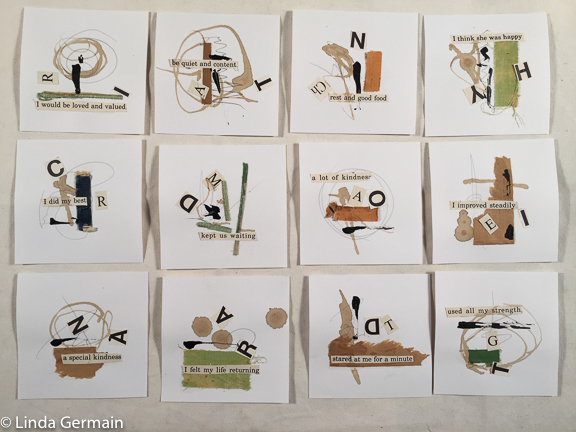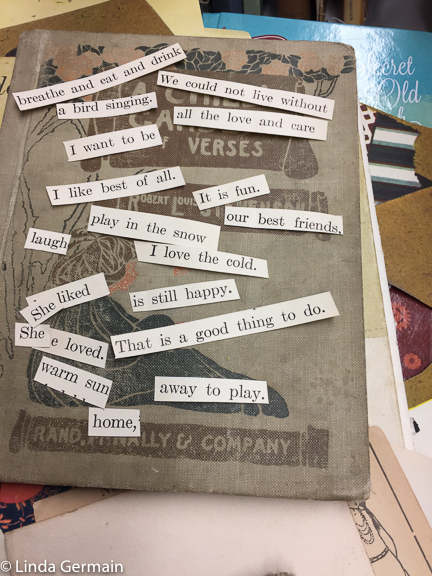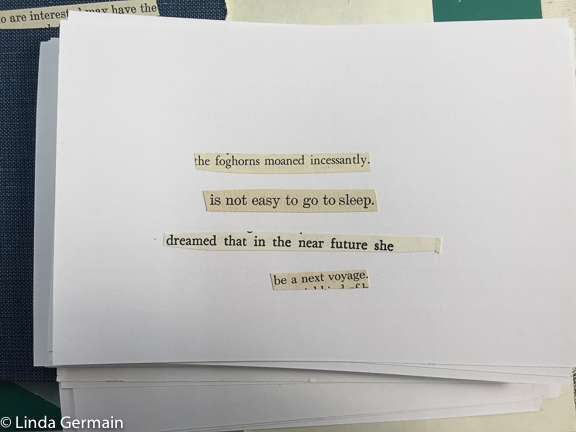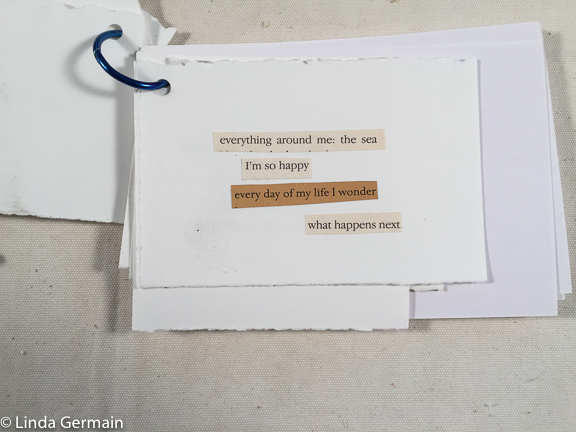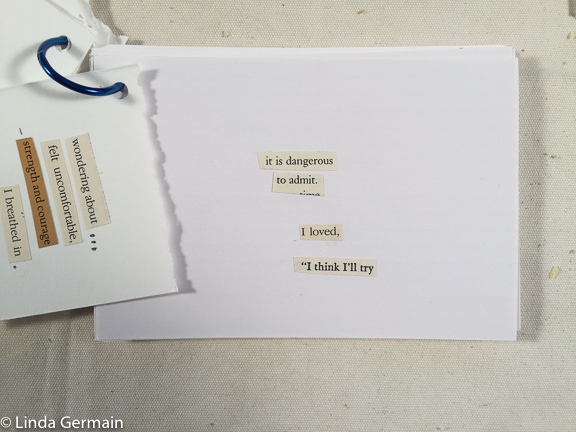Build your design skills – gelatin printmaking
Gelatin printmaking is fast and gives you immediate feedback about composition and design skills. That is one reason that I love the process.
Art school teaches us to make thumbnail drawings and plan our composition first. I just don’t have the patience for that approach.
I like the trial and error approach of making lots of prints. And over time my design skills have grown and I had fun in the process. And I want to share that approach and what I have learned with you in the online printmaking workshops.
We will create growth and success by:
- Getting to know your masking stencils and how to get strong impressions
- Limiting the colors so we can create prints with a strong range of value
- Using a small standard size paper to get a dynamic division of space
These boundaries will give you the structure to support new understanding of the tools and how the impressions are created. This should create success and happiness!
I hope you will check out the online printmaking classes.
Build your design skills – gelatin printmaking Read More »
